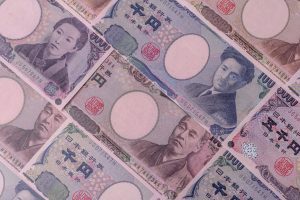Japan’s Yen has entered a steep decline, rattling financial markets and prompting urgent warnings from the country’s Finance Minister. The currency’s rapid fall in recent days has sparked fears over Japan’s economic stability, with policymakers and investors now on high alert as the slide threatens to disrupt trade, inflation control, and overall confidence in the nation’s economy.
Over the past several months, the Japanese Yen has weakened sharply against major currencies, particularly the U.S. dollar and the euro. Analysts attribute the decline to a mix of global and domestic pressures—including diverging monetary policies, persistent global economic uncertainty, and rising inflation in Japan. The result has been one of the steepest depreciations in a decade, reviving memories of past currency crises and prompting speculation about whether government intervention may be imminent.
The country’s Finance Minister recently issued a stern statement, making it clear that while Japan respects free-market dynamics, the government “will not hesitate to act” if the Yen’s fall becomes excessive or destabilizing. This warning represents a notable shift from Japan’s previous hands-off approach, suggesting that authorities are considering direct currency support measures or coordinated intervention with global partners if volatility worsens.
The economic ripple effects of the Yen’s weakness are significant. On one hand, Japanese exporters like Toyota and Sony stand to benefit as their products become more competitively priced overseas. On the other, import-dependent industries—particularly those relying on energy and raw materials—face rising costs, which could intensify domestic inflation. For households, that means higher prices on imported goods, compounding the pressure of Japan’s already fragile post-pandemic recovery.
Internationally, currency traders and global investors are watching closely. The Bank of Japan (BOJ) remains committed to its ultra-loose monetary policy, keeping interest rates near zero despite rising inflation. Many analysts view this as a major factor behind the Yen’s fall, given that other central banks—like the Federal Reserve and European Central Bank—have moved aggressively to tighten monetary policy. Should the BOJ hint at a shift toward tightening or signal supportive measures, markets could see a temporary stabilization of the currency. For now, however, sentiment remains cautious and uncertain.
Economists warn that if the Yen continues to weaken, Japan risks importing inflation, which could erode consumer purchasing power and stall economic recovery. Balancing monetary stimulus with the need to protect the currency presents one of Japan’s toughest policy challenges in years. As the situation develops, both global markets and domestic industries are bracing for potential ripple effects.
Looking ahead, attention will turn to official statements from the BOJ and Japan’s Ministry of Finance, as well as key economic indicators such as inflation and trade balance data. These upcoming reports will provide crucial clues about whether Japan can stabilize its currency—or if the Yen’s slide will continue to test the limits of the government’s patience and policy tools.
What is causing the Yen to fall so sharply?
The Yen’s decline is primarily driven by divergent monetary policies, global economic uncertainties, and domestic fiscal challenges that make the currency less attractive to investors.
How might the Japanese government respond to the Yen’s decline?
The government may consider intervention measures such as direct currency support or monetary policy adjustments to stabilize the Yen and protect economic stability.
What are the potential impacts of a weaker Yen on Japan’s economy?
A weaker Yen can boost exports but also increase import costs, potentially fueling inflation and affecting consumer purchasing power domestically.
Summary
- Yen decline: The Yen recently fell beyond ¥150 per USD, reaching its weakest level since 1990 (as of October 2025).
- Finance Minister warning: Japan’s Finance Minister publicly stated that intervention is possible to curb excessive volatility.
- BOJ policy stance: The Bank of Japan maintains negative interest rates and continues yield curve control, contributing to the Yen’s weakness.
- Exporter and importer impacts: Supported by economic analysis; weaker Yen benefits exporters but raises import costs and inflation risk.
- Potential intervention: Japan last intervened in currency markets in 2022 and could act again if volatility persists.





